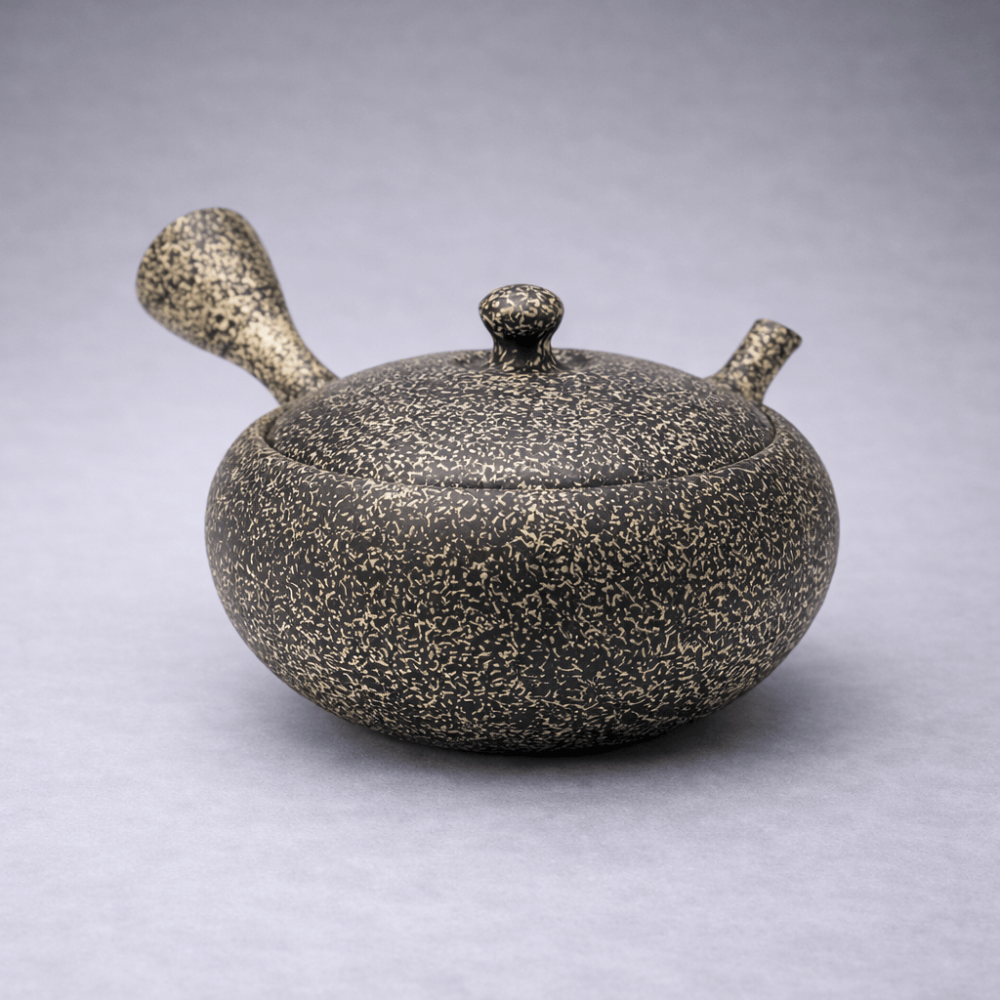
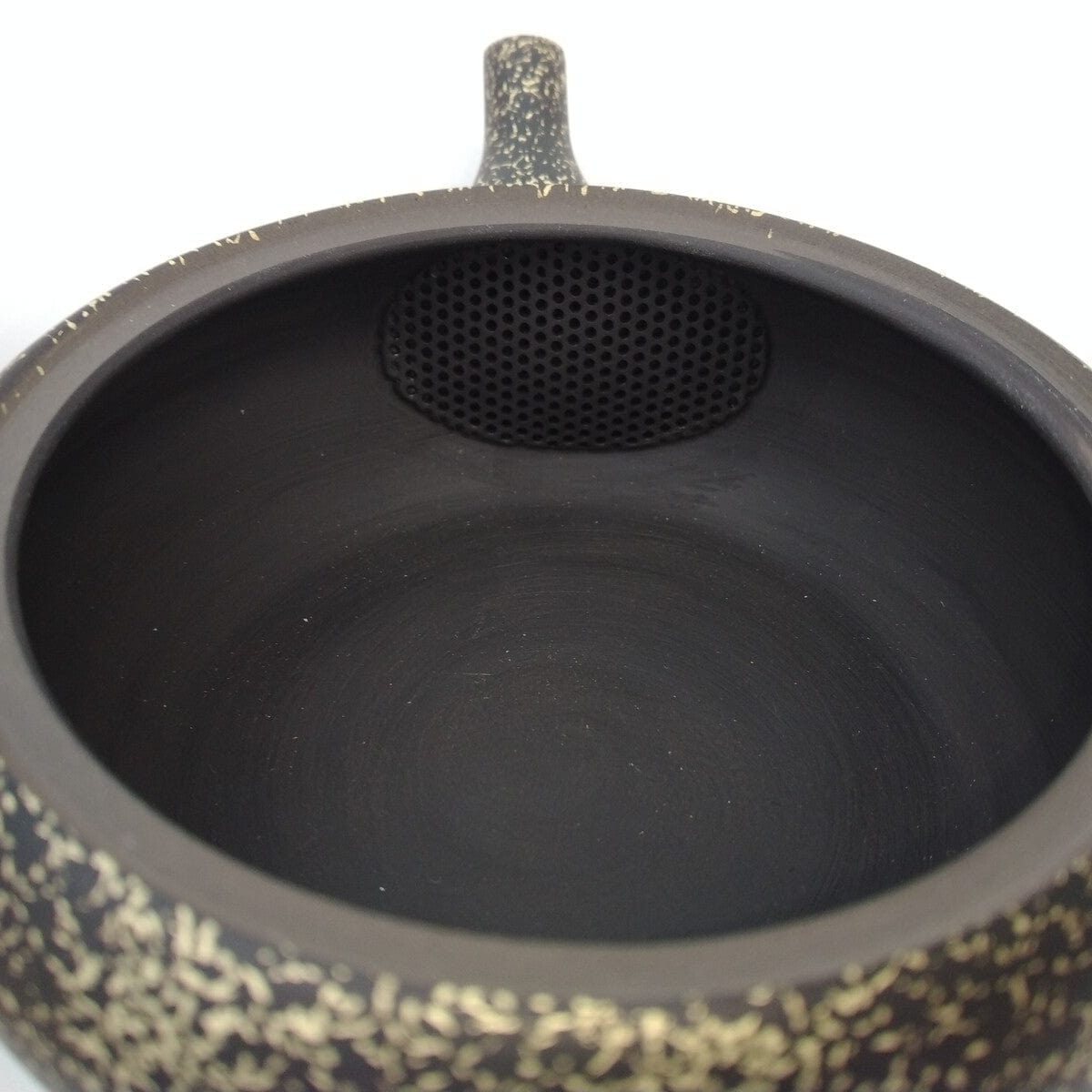
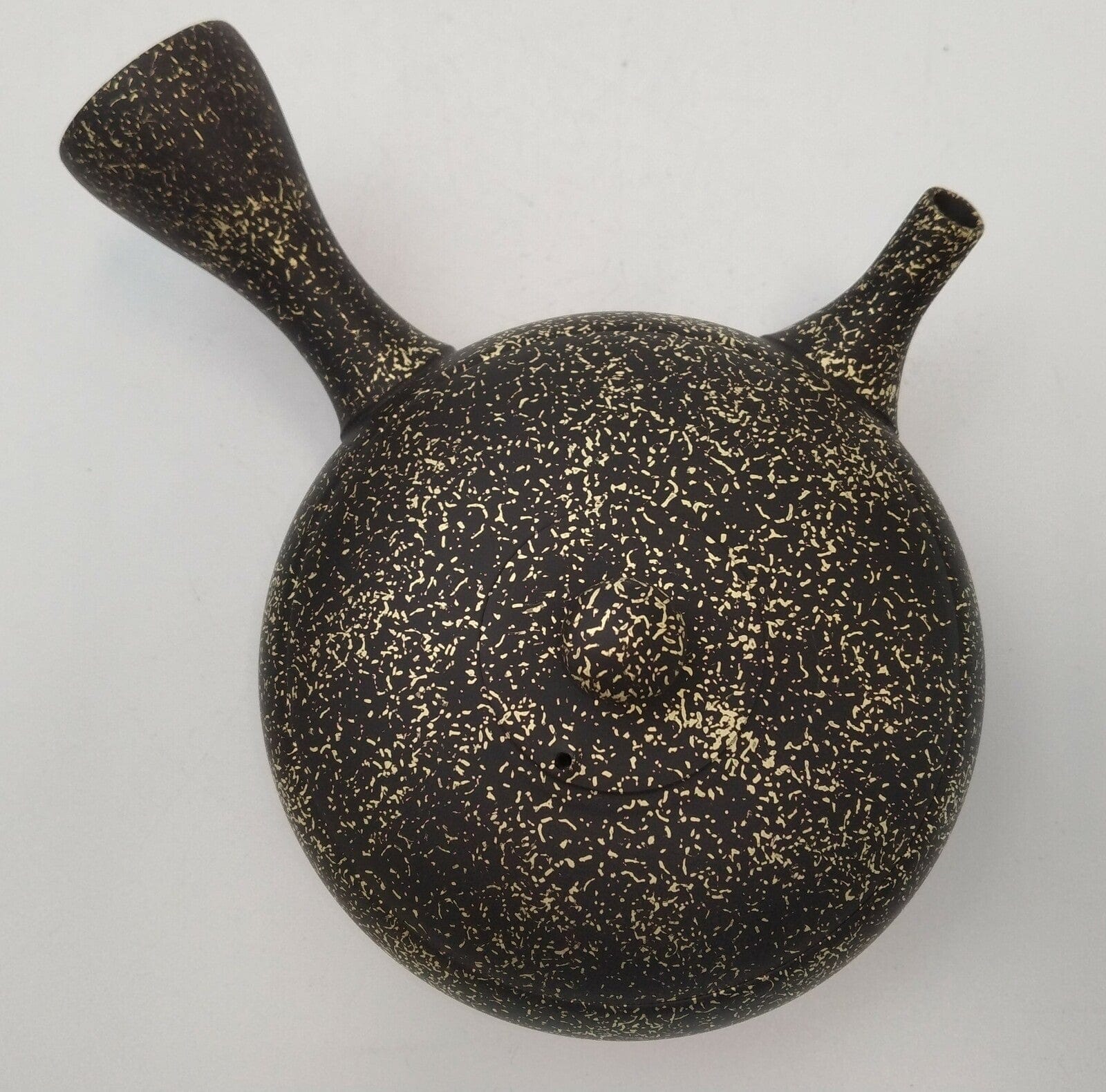
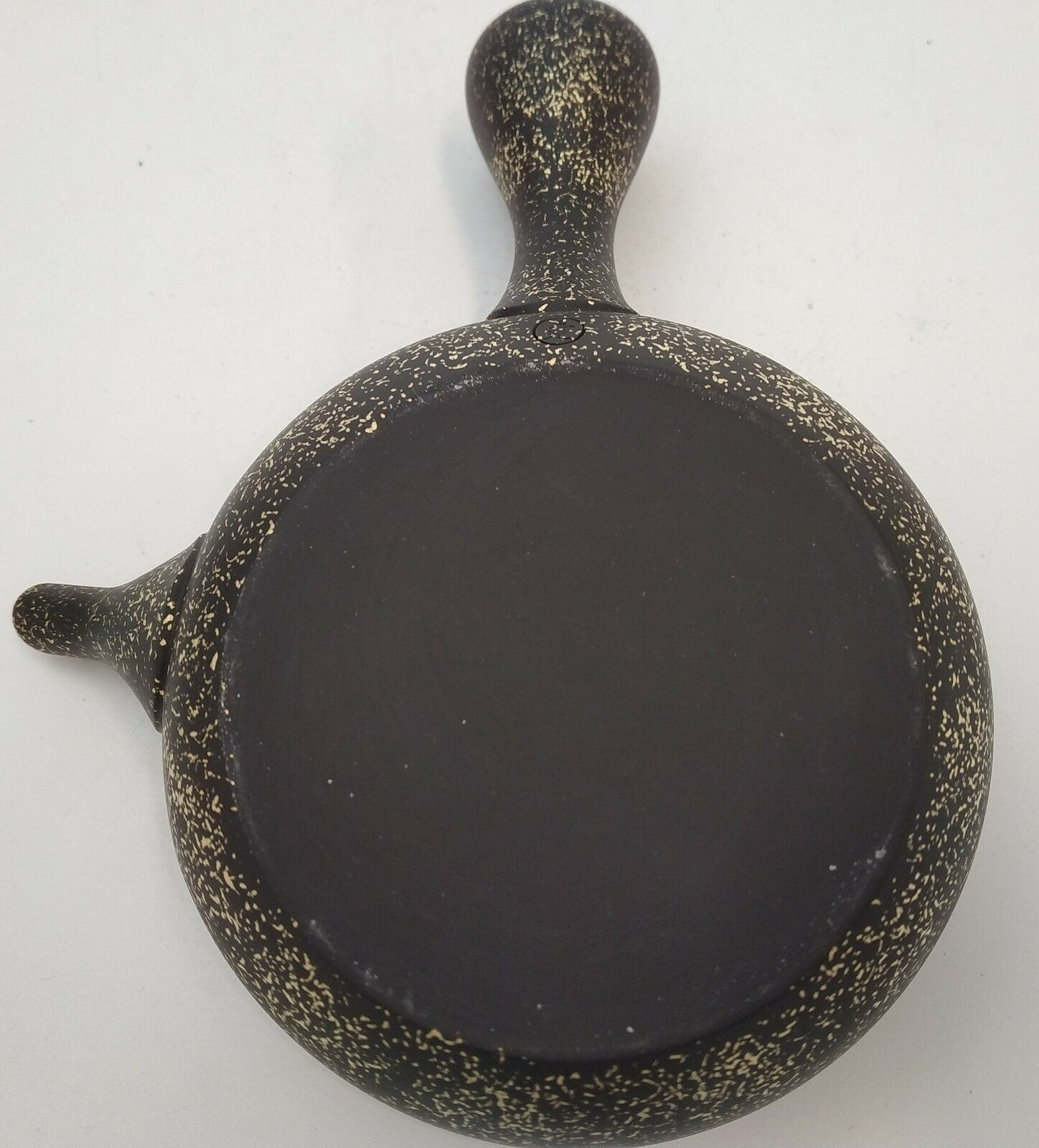
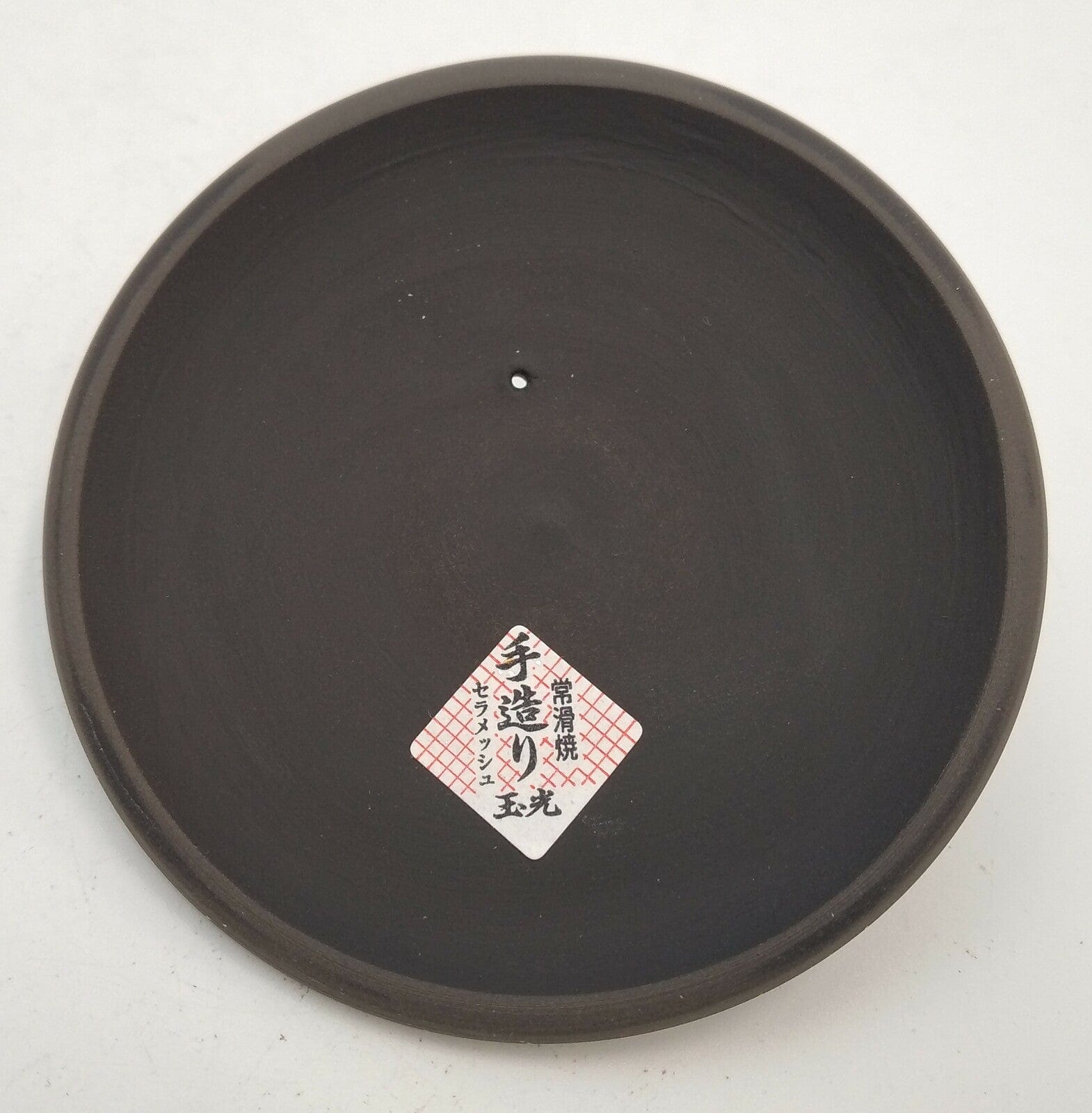
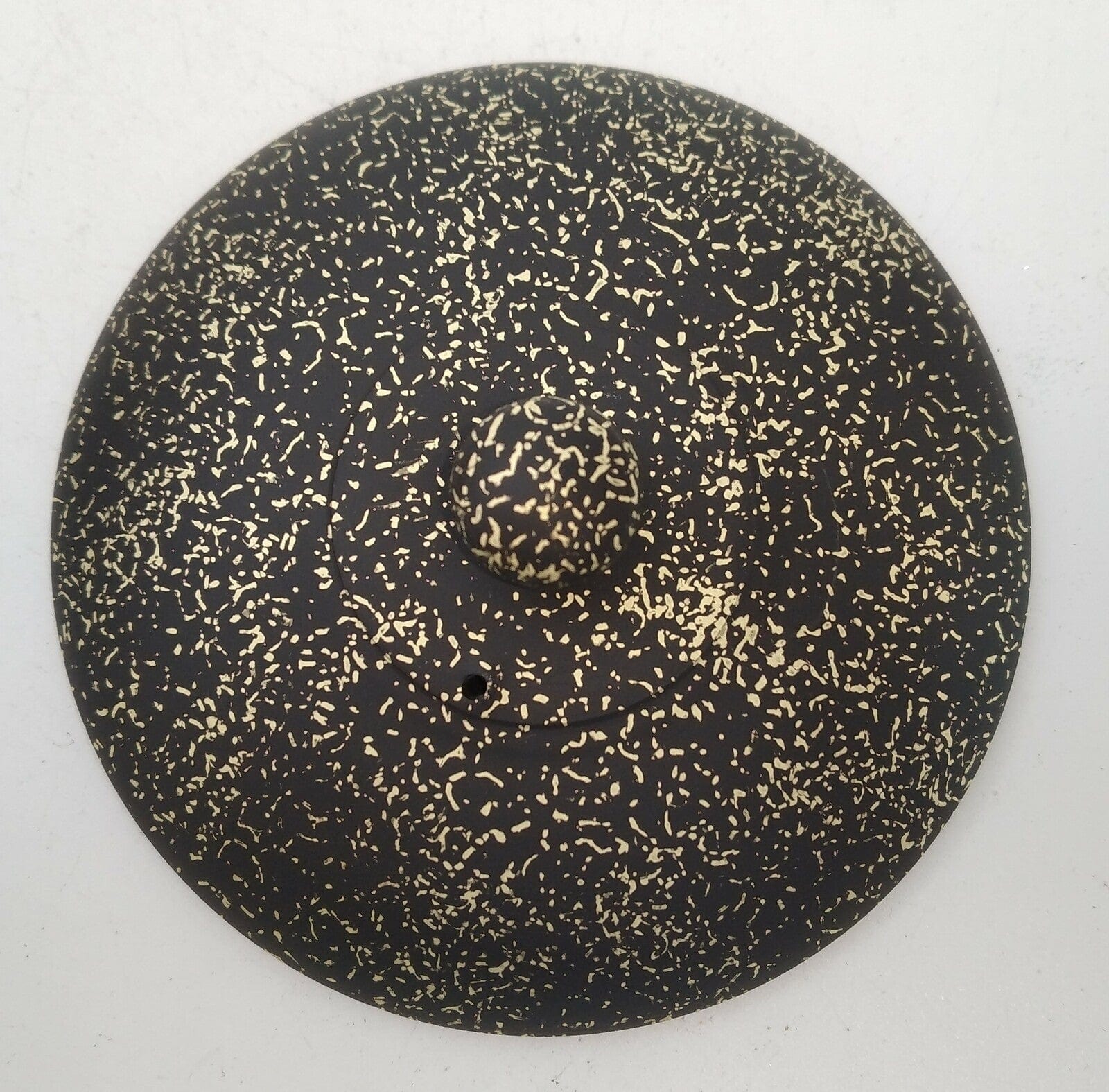
Tamamitsu black mud flat round gold tataki Tea Pot
Fast & Secure Delivery from Japan to your Door [Shipping Policy]
Shop Safely with Encrypted Checkout and Verified Gateways.
Pairs well with

Tamamitsu black mud flat round gold tataki Tea Pot
Golden Harmony in Your Hands – Tamamitsu Flat Round Teapot for Effortless Pouring
Step into the quiet grace of Japanese craftsmanship with the Tamamitsu Black Mud Flat Round Gold Tataki Teapot. Born from the collaborative genius of Tokoname and Kutani—the twin heartlands of traditional pottery—this piece blends function, form, and artistry in a way few modern objects can.
The body is wheel-thrown by celebrated Tokoname potter Tamamitsu Hirotaka Umehara, using fine-grained red clay transformed into black mud through time-honored techniques. Its unique flat and rounded silhouette makes it stable, easy to pour, and comfortable to grip—even for delicate hands. The exterior is finished with a mesmerizing gold tataki pattern—hand-painted by Kutani artist Tamura Tsugumori—that evokes quiet luxury and celestial beauty.
Inside, a Ceramesh strainer guarantees a clear, refined pour. This signature Tokoname innovation is prized for its precision and durability, seamlessly integrated without interrupting the clay’s natural feel. The result is a teapot that honors both tradition and daily usability.
Whether you’re steeping sencha, gyokuro, or houjicha, this 160cc teapot delivers optimal heat control and clean extraction. It’s not just a tool—it’s a ritual in motion. And when not in use, it rests like a quiet sculpture, glowing softly with hand-applied gold accents.
Add it to your tea practice, or gift it to someone who appreciates timeless beauty. With every use, you’ll be reminded: true craftsmanship is not just seen—it’s felt.
Product Information
Care instructions
Note
FAQs
All you need to know about Tokoname Ware.
What is Tokoname ware, and why is it so special?
Tokoname ware (常滑焼, Tokoname-yaki) is a traditional form of Japanese pottery that originates from Tokoname City in Aichi Prefecture, one of the Six Ancient Kilns of Japan. With over 900 years of history, it is celebrated for its distinctive use of iron-rich red clay, which is often left unglazed to allow the clay’s natural beauty to shine. This unglazed surface develops a soft sheen and character with age and use, especially when used with tea. Tokoname ware is renowned for its balance of rustic charm, elegant simplicity, and everyday functionality, making it both a collector’s favorite and a staple of modern Japanese homes.
Why are Tokoname teapots (kyūsu) especially valued by tea lovers?
Tokoname’s side-handled teapots, or kyūsu, are highly prized in Japanese tea culture for their superb heat retention, smooth pour, and the unique way the unglazed clay enhances the flavor of green tea—particularly sencha and gyokuro. The clay subtly absorbs tea oils over time, enriching the aroma and depth of future brews. Many Tokoname teapots also feature built-in ceramic mesh filters, which allow for a clean, refined pour without metal interference. These qualities, paired with minimalist design and ergonomic handling, make Tokoname teapots a must-have for serious tea enthusiasts.
Is Tokoname ware always red? Are there other styles or finishes?
While Tokoname ware is most famously associated with its iconic reddish-brown clay, not all pieces are the same. The region’s artisans also produce wares with black, gray, or ash-glazed finishes, depending on the firing techniques, clay blends, and whether they use oxidation or reduction kilns. Some artists incorporate modern design sensibilities, experimenting with glazes and forms, while others preserve traditional aesthetics. Regardless of style, the unifying theme is a commitment to natural textures, balanced forms, and the philosophy of wabi-sabi—the beauty of imperfection and impermanence.
Can Tokoname ware be used daily, or is it mostly decorative?
Tokoname ware is not only beautiful—it’s also highly functional and durable, intended for everyday use. Items like teapots, cups, planters, and incense holders are made to be used regularly. The clay’s natural heat resistance and strength make it ideal for repeated brewing and handling. That said, as with all artisanal ceramics, a little care goes a long way. Avoid using Tokoname ware in microwaves or dishwashers (especially unglazed pieces), and hand wash with warm water only. With proper care, these pieces can last a lifetime and become even more beautiful with age.
How do I know if a piece is authentic Tokoname ware?
Authentic Tokoname ware is typically handcrafted in Tokoname City by artisans who are part of long-established studios or kilns. Many genuine pieces bear a maker’s seal or signature, often engraved or stamped on the base. You may also find regional certifications or documentation when purchasing from reputable sources. Look for details that reflect handcraftsmanship—subtle variations in glaze, slight asymmetry, or a tactile surface. Buying from trusted retailers or directly from workshops ensures authenticity and helps support the preservation of Tokoname’s cultural heritage.

